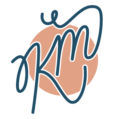Planning long-term professional development allows school leaders to strategically align training with the school’s academic goals. Embedding the school’s academic goals into every stage of professional development, school leaders can create a clear and consistent path toward success. By taking a long-term view, principals can ensure a cohesive and progressive learning experience for teachers, reinforcing teaching skills development throughout the year while adapting to emerging challenges.

This approach fosters continuity, allows for deeper dives into important topics, and provides time for discussion, peer collaboration, self-reflection and growth. Moreover, it helps schools prioritize key goals, schedule effectively, and ensure that professional learning is not rushed or reactive, but thoughtful and impactful.
The Undeniable Benefits of Proactive PD Planning
For K12 administrators, the notion of “planning” often conjures images of endless meetings and overflowing calendars. However, when it comes to professional development, proactive planning isn’t just a good idea – it’s a non-negotiable for genuine school improvement. Here’s why dedicating time to strategic PD planning pays dividends for your staff, students, and school culture:
- Directly Links PD to School-Wide Goals: Without a comprehensive plan, PD can become a series of disconnected workshops. Strategic planning ensures every session, every module, and every coaching opportunity directly supports your school’s overarching academic goals. This clear alignment maximizes impact and demonstrates to teachers that their growth is integral to collective success.
- Maximizes Resource Allocation: Time, money, and staff energy are precious resources. Thoughtful planning helps you make the most of them. By identifying needs in advance, you can secure the best facilitators, negotiate favorable rates, and avoid last-minute, rushed decisions that often lead to less effective (and more expensive) solutions.
- Cultivates a Culture of Continuous Learning: A well-structured PD plan signals to your educators that learning and growth are valued and expected parts of their professional journey. It moves beyond one-off training to embed a sustained commitment to improvement, fostering a dynamic environment where teachers are always refining their craft.
- Boosts Teacher Morale and Retention: When PD is relevant, timely, and supports their actual classroom challenges, teachers feel valued and empowered. A clear, predictable PD schedule reduces anxiety and allows teachers to anticipate and prepare for learning opportunities. This investment in their growth can significantly contribute to job satisfaction and, ultimately, teacher retention.
- Allows for Iteration and Refinement: A long-term plan isn’t rigid; it’s a living document. Planning out your year provides checkpoints to assess effectiveness, gather feedback, and make necessary adjustments. This iterative process ensures PD remains responsive to evolving needs and challenges.
If long-term planning seems overwhelming, approach your planning month by month.
Here is our monthly breakdown suggestions:
August
While there are many events that need to take place before the school year is underway, such as new teacher orientation, essential back-to-school or technology tool training, it is a good time to offer professional development towards the school’s academic goal(s). Review what faculty learned during the past year and how student learning was impacted, then explain and set the direction for professional development workshops for school improvement.
October
Once the school year is well under way, dive into data-driven instruction with workshops on analyzing student performance data to inform teaching practices. These can be accomplished in professional learning communities or regular team teacher meetings, as well as faculty meetings. Align these sessions with the school’s academic goals to ensure targeted interventions and strategies are being developed.
November
Provide differentiated teacher professional development based on teacher needs, such as classroom management techniques or differentiated instruction strategies, all tied back to improving student outcomes toward the school’s academic targets. Offering choices for faculty development can motivate and inspire teachers to take charge of their own learning. Self-paced learning modules, microlearning approaches, or personalized development plans can help meet individual needs and schedules.
December
Provide time for teachers to reflect on their teaching skill development throughout the first semester and invite them to share their successes and challenges. Use this reflection to assess progress toward academic goals and recalibrate where necessary.
January/February
Deepen instructional practices by exploring new pedagogies or enhancing subject-specific teaching strategies that directly support the achievement of academic benchmarks. A professional development session is successful when it balances learning meaningful new information with adequate time to ‘process’ it. Information overload can lead teachers to tune out or be off-task during PD.

March
Focus on student engagement and active learning methods to keep momentum strong in the second half of the school year. Encourage teachers to practice their newly-learned strategies and skills in the classroom. Ensure these new methods are tied to increasing performance and achieving the school’s academic goals.
April
Revisit technology integration, ensuring teachers are maximizing digital tools to support student learning, particularly in areas where progress toward academic goals may be lagging. Continue to provide teachers with time to discuss, share and reflect on their professional learning with their peers. NOTE: April is a good month to start working on next-year’s professional development goals.
May/June
Reflect on the year’s growth, celebrate achievements, and gather feedback to inform planning for next year. Evaluate how well professional development supported the school’s academic goals and identify areas of focus for future growth.
Conclusion

Strategically planning professional development throughout the year empowers school leaders to embed academic goals into every stage of teacher growth. By pacing professional learning month by month, principals can provide teachers with the tools, skills, and support they need to stay engaged and effective in the classroom. This thoughtful, long-term approach fosters a culture of continuous improvement and maximizes the impact on student achievement.
Contact KM Educational Consulting for your professional development and instructional coaching needs!
Unlock your school’s potential.

